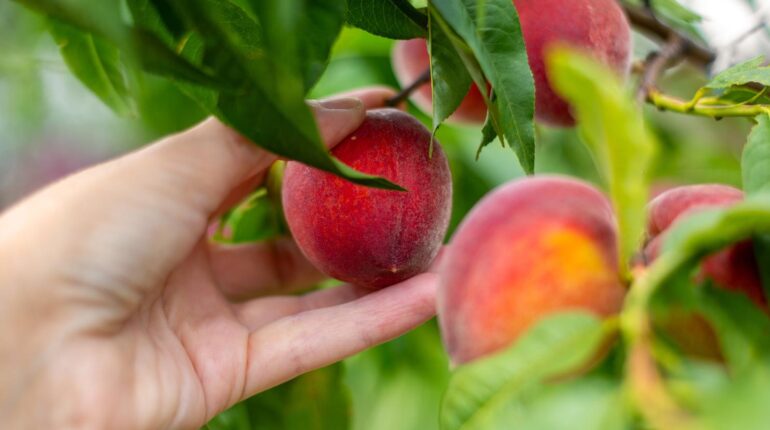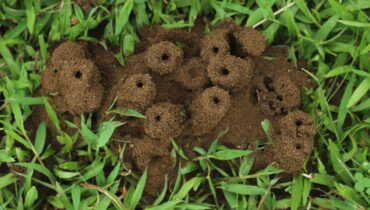📌 The Hidden Watering Mistake That’s Ruining Your Peach Harvest (And How Often You Should Really Water)

Posted 24 July 2025 by: Admin
Image d’illustration © TopTenPlay EN
Understanding Peach Tree Water Requirements: Age And Soil Matter
The secret to growing exceptional peaches lies in understanding that not all trees share the same thirst. A peach tree’s water needs evolve dramatically as it matures, making age the primary factor in determining your watering strategy.
Newly planted peach trees demand your closest attention. Their smaller root systems cannot penetrate deep into the soil to access moisture reserves, leaving them vulnerable to drought stress. These young trees require frequent watering sessions to establish themselves successfully in their new environment.
The transformation becomes evident as your tree matures. Established peach trees develop extensive root networks that reach far into the soil, making them increasingly self-sufficient. A mature tree typically requires watering only once a week to once a month, depending on your local rainfall patterns.
The monitoring technique remains consistent regardless of age: check the top two inches of soil around your tree’s base. When this layer feels dry to the touch, it’s time to water. This simple test eliminates guesswork and prevents both under and overwatering.
Regional climate plays a crucial role in your watering schedule. An inch of rainfall every seven to 10 days provides sufficient moisture for a mature peach tree. However, this natural benchmark serves merely as a starting point – your soil type and local conditions will ultimately dictate the precise frequency your tree requires for optimal fruit production.
Image d’illustration © TopTenPlay EN
The Deep And Slow Watering Method: Professional Techniques For Optimal Growth
Understanding when to water sets the foundation, but mastering the technique determines your success. Professional orchardists rely on a deep and slow watering method that transforms ordinary peach trees into prolific fruit producers.
This approach ensures water penetrates to the root system’s base rather than pooling on the surface or evaporating before absorption. The technique creates a fundamental shift in how your tree develops underground – encouraging robust, deep root growth instead of weak surface roots that struggle during hot weather.
Drip irrigation systems and soaker hoses represent the gold standard for peach tree watering. These tools deliver water directly to the soil at a controlled rate, eliminating waste while providing consistent moisture distribution. Unlike overhead sprinklers that lose significant water to evaporation, these methods channel every drop where it’s needed most.
The science behind deep watering reveals its true value during summer heat waves. Surface roots dry out rapidly when temperatures soar, leaving trees stressed and vulnerable. Deep roots, however, access moisture reserves that remain stable even during extended dry periods, ensuring continuous fruit development.
This professional approach requires patience – water must be applied slowly enough to penetrate rather than run off. The investment in proper technique pays dividends through stronger trees, better fruit quality, and reduced water consumption. Your peach tree’s root architecture will thank you with years of abundant, sweet harvests.
Image d’illustration © TopTenPlay EN
Soil Types And Environmental Factors: Adapting Your Watering Strategy
Even the most refined deep watering technique requires strategic adaptation based on your unique growing conditions. Professional orchardists understand that soil composition dramatically alters water retention patterns, demanding entirely different approaches for optimal results.
Sandy soils present the greatest watering challenge due to their rapid drainage characteristics. Water filters through sand particles quickly, often before roots can fully absorb available moisture. This accelerated drainage means sandy soil gardeners must increase watering frequency while maintaining the deep, slow application method. The trade-off becomes clear: more frequent sessions, but shorter duration to prevent runoff.
Clay-based soils operate on the opposite principle, holding moisture for extended periods through their dense particle structure. These soils can maintain adequate hydration with less frequent watering, sometimes requiring intervention only when rainfall drops below one inch per seven to ten days. However, clay’s water retention advantage comes with a critical caveat – proper drainage becomes essential to prevent root rot.
Environmental factors add another layer of complexity to your watering strategy. Regional rainfall patterns, humidity levels, and seasonal temperature fluctuations all influence moisture requirements. Smart gardeners monitor local weather patterns and adjust accordingly, reducing artificial watering during rainy periods while intensifying care during drought conditions.
Mulching around the tree base serves as your secret weapon against water evaporation, regardless of soil type. This simple addition creates a protective barrier that locks moisture in place, reducing watering frequency while maximizing absorption efficiency. The mulch layer transforms your carefully applied water into sustained nutrition for developing peaches.
Image d’illustration © TopTenPlay EN
Common Watering Mistakes And Best Practices For Sweet, Juicy Peaches
Despite mastering soil adaptation and mulching techniques, even experienced gardeners fall victim to fundamental watering errors that sabotage their peach production. The most devastating mistake reveals itself in rigid scheduling – treating peach trees like clockwork rather than living organisms with fluctuating needs.
Fixed watering schedules represent the antithesis of proper peach cultivation. Trees don’t operate on human timelines; their moisture requirements shift based on weather patterns, growth phases, and soil conditions. Gardeners who water every Tuesday regardless of rainfall or soil moisture create either drought stress or waterlogged roots – both pathways to diminished fruit quality.
Equally destructive is the amateur tendency to water peach tree leaves rather than focusing on root zones. This misguided approach does more harm than good, creating ideal conditions for fungal diseases while leaving the actual root system parched. Professional orchardists direct water exclusively to the soil around the tree base, never touching foliage during irrigation.
However, the most widespread error across all experience levels remains overwatering. This represents one of the most common mistakes everyone makes when growing fruit trees, according to horticultural experts. The telltale sign of proper hydration lies in soil texture – damp but never soaked around the tree base.
The solution centers on responsive monitoring rather than mechanical routine. Check soil moisture regularly, observe your tree’s behavior, and adjust accordingly. This attentive approach transforms your peach tree from a struggling plant into a productive source of wonderfully delicious peaches for years to come.




















